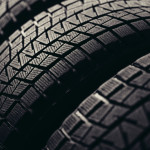Why Regular Tire Inspections Are Essential for Your Vehicle’s Safety—and How to Avoid Bald Tires
 When it comes to vehicle maintenance, tires are often overlooked—yet they are arguably the most critical component in ensuring your safety on the road. Your tires are the only point of contact between your vehicle and the pavement, and their condition directly affects handling, braking, and overall control. Neglecting tire care can lead to bald tires, which are incredibly dangerous and significantly increase the risk of accidents.
When it comes to vehicle maintenance, tires are often overlooked—yet they are arguably the most critical component in ensuring your safety on the road. Your tires are the only point of contact between your vehicle and the pavement, and their condition directly affects handling, braking, and overall control. Neglecting tire care can lead to bald tires, which are incredibly dangerous and significantly increase the risk of accidents.
In this blog, we’ll explore why regular tire inspections are vital, what dangers bald tires pose, and practical tips to keep your tires in good shape for safer driving.
The Importance of Regular Tire Inspections
1. Safety First
Your tires bear the entire weight of your vehicle and absorb the shocks from the road. Over time, tires wear down, lose tread depth, or develop issues like uneven wear, punctures, or sidewall damage. Regular inspections help detect these problems early before they escalate.
Tread depth is crucial because it provides the traction needed to grip the road, especially in wet or slippery conditions. Worn tires can increase stopping distances and decrease your vehicle’s ability to handle turns safely. According to the National Highway Traffic Safety Administration (NHTSA), worn tires are a major contributing factor in many vehicle crashes.
2. Prevent Costly Repairs
Ignoring tire health can lead to more expensive issues. For example, uneven tire wear might indicate alignment problems, which if left unaddressed, can damage your suspension or steering components. Regular inspections can catch these problems early, saving you money on costly repairs.
3. Improve Fuel Efficiency
Tires that are not properly inflated or are excessively worn increase rolling resistance, meaning your engine has to work harder to move the vehicle. This leads to higher fuel consumption. Keeping your tires in good condition with proper pressure and tread extends your mileage per gallon and saves money at the pump.
4. Prolong Tire Life
Routine checks and maintenance—like rotating your tires, balancing, and alignment—can significantly extend the lifespan of your tires, meaning fewer replacements over time. Considering that quality tires are a major investment, proper care maximizes their value.
The Danger of Bald Tires
What Are Bald Tires?
Bald tires are tires that have worn down to the point where the tread is no longer effective. The tread grooves, which channel water away from the tire and provide traction, become shallow or disappear entirely. This dramatically reduces grip, especially on wet roads.
Risks of Driving on Bald Tires
Hydroplaning: Without sufficient tread, water cannot be dispersed effectively, increasing the chance your tires will lose contact with the road surface and slide uncontrollably on wet surfaces.
Poor Braking Performance: Bald tires lengthen stopping distances, making it harder to avoid collisions.
Reduced Handling: Bald tires negatively affect your vehicle’s ability to respond to steering inputs, particularly in emergency maneuvers.
Blowouts: Tires worn down to the cords are more prone to punctures and sudden blowouts, which can cause loss of vehicle control.
How to Prevent Tires from Becoming Bald
1. Check Tire Pressure Monthly
Under-inflated tires wear out faster and unevenly. Over-inflated tires can reduce traction. Use a tire gauge to check your pressure at least once a month and before long trips, and keep it at the manufacturer’s recommended level.
2. Regularly Inspect Tire Tread
Use the “penny test” to check your tread depth: Insert a penny into the tire tread with Lincoln’s head facing down. If you can see the top of Lincoln’s head, your tread is too shallow and it’s time to replace your tires.
3. Rotate Tires Every 5,000 to 8,000 Miles
Tire rotation ensures even wear across all tires by switching their positions regularly. This is important because front and rear tires wear differently depending on your vehicle’s drivetrain and driving style.
4. Balance and Align Your Tires
Unbalanced tires cause vibrations that lead to uneven wear. Poor alignment makes your tires wear out on one side faster. Have your tires balanced and your alignment checked annually or whenever you notice uneven wear or your vehicle pulling to one side.
5. Avoid Aggressive Driving
Hard braking, fast acceleration, and sharp turns put extra strain on tires and accelerate wear. Drive smoothly to extend tire life.
6. Don’t Ignore Warning Signs
If you notice vibrations, pulling to one side, or visible damage like cuts or bulges in your tires, have them inspected by a professional immediately.
When to Replace Your Tires
Generally, it’s recommended to replace tires when tread depth falls below 2/32 of an inch, which is the legal minimum in many places. However, for safety, many experts suggest replacing them sooner (around 4/32) for better wet-weather performance.
Also, tires have an age limit. Most manufacturers recommend replacing tires every six to ten years regardless of tread, due to rubber degradation.
Final Thoughts
Your vehicle’s tires are a critical safety component that deserves regular attention. Skipping tire inspections and maintenance can lead to bald tires, significantly increasing your risk of accidents caused by poor traction, hydroplaning, or blowouts.
Regular tire inspections help you catch issues early, save money on repairs, improve fuel economy, and most importantly, keep you and your passengers safe. By maintaining proper tire pressure, rotating tires, and replacing them before they become dangerously worn, you ensure a safer, smoother ride.
So next time you get your oil changed or take your car in for maintenance, ask your mechanic to check your tires too. Your safety—and your wallet—will thank you.






